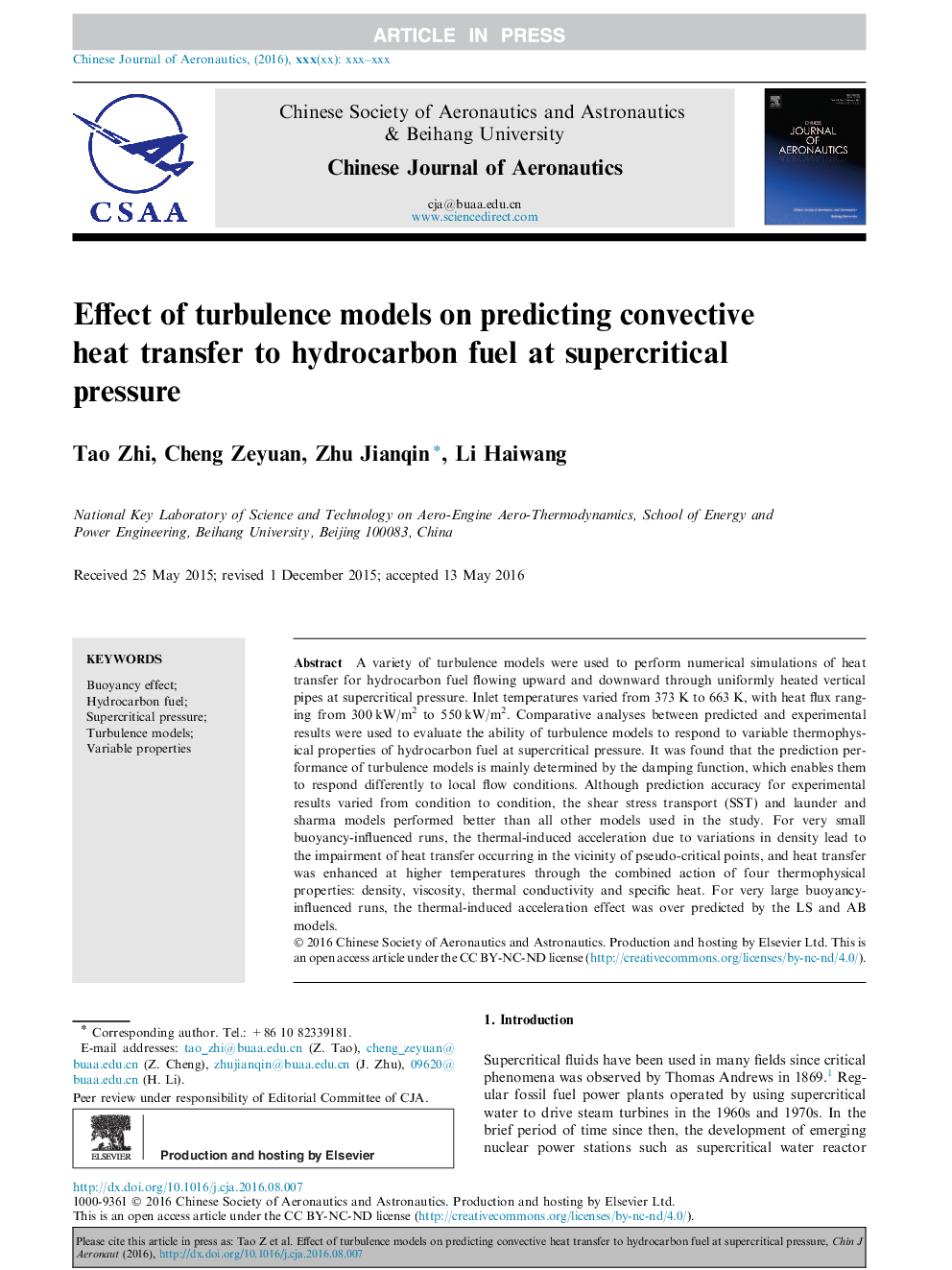| Article ID | Journal | Published Year | Pages | File Type |
|---|---|---|---|---|
| 7154323 | Chinese Journal of Aeronautics | 2016 | 15 Pages |
Abstract
A variety of turbulence models were used to perform numerical simulations of heat transfer for hydrocarbon fuel flowing upward and downward through uniformly heated vertical pipes at supercritical pressure. Inlet temperatures varied from 373Â K to 663Â K, with heat flux ranging from 300Â kW/m2 to 550Â kW/m2. Comparative analyses between predicted and experimental results were used to evaluate the ability of turbulence models to respond to variable thermophysical properties of hydrocarbon fuel at supercritical pressure. It was found that the prediction performance of turbulence models is mainly determined by the damping function, which enables them to respond differently to local flow conditions. Although prediction accuracy for experimental results varied from condition to condition, the shear stress transport (SST) and launder and sharma models performed better than all other models used in the study. For very small buoyancy-influenced runs, the thermal-induced acceleration due to variations in density lead to the impairment of heat transfer occurring in the vicinity of pseudo-critical points, and heat transfer was enhanced at higher temperatures through the combined action of four thermophysical properties: density, viscosity, thermal conductivity and specific heat. For very large buoyancy-influenced runs, the thermal-induced acceleration effect was over predicted by the LS and AB models.
Related Topics
Physical Sciences and Engineering
Engineering
Aerospace Engineering
Authors
Tao Zhi, Cheng Zeyuan, Zhu Jianqin, Li Haiwang,
